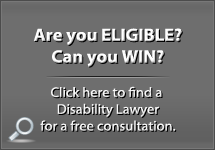
A herniated disc is one of the most painful and common injuries. Often referred to as a ‘slipped disc,’ this condition can severely restrict a sufferer’s mobility and make everyday tasks absolutely impossible. New technologies like MRI exams provide you with the imaging evidence needed to show the severity of disc and spinal injuries, allowing doctors to be more specific with their treatment plan which leads to many patients feeling better.
Not only does a slipped disc result in excruciating back pain, but loss of sensation or reflexes may also occur due to nerve damage. The spinal cord contains many nerves, and disc injuries can cause nerve damage. Most herniated discs can be treated with pain killers and physical treatment such as traction and stretching. In the cases where this treatment works, the pain usually subsides quickly and within four to six weeks no further treatment is necessary.
In many cases, the pain from a herniated disc does not just go away, and the problem with a back injury is that it affects absolutely everything you do, or even don’t do. Someone with severe back pain will find out that even just laying in one position does not alleviate the agony, making the performance of any normal tasks a ridiculous notion.
When the minor treatments do not bring relief and the condition persists, further tests are needed to locate the problem itself and to confirm its severity. In such instances, imaging tests are usually required. The main types of spinal imaging used today are Computed Tomography (CT) and Magnetic Resonance Imaging (MRI).
An MRI is a very effective and safe technology that allows medical experts to pin-point internal problems without intrusive methods being required. The test basically sends radio waves through the body by creating a magnetic field around it, and then a computer maps the responses to build a picture of your internal organs, muscles, bones etc.
The exam itself usually lasts between thirty minutes and one hour. On some occasions the patient may need to be injected with a contrast agent to provide a clearer picture to the radiologist.
This test provides such a clear picture to examiners that they are able to see inflammation and even locate any nerve damage, offering a critical tool for determining if surgery is needed for almost any spinal problem without doing any invasive procedure to the subject. An MRI exam is pretty comfortable for the patient, it’s not unheard of for the subject to fall asleep during the exam.
For long term pain from a disc injury, there is the possibility of being awarded benefits from the Social Security Disability program. The results of an MRI will be essential in backing up any claim as this exam produces an objective report. Pain is subjective, and hard to quantify, the MRI however is able to display the spine in such detail that doctors can review the image and agree that pain would be caused (or not) based on what they see in the MRI.
Spinal injuries like a herniated disc are listed in the programs impairment listing manual, also known as the Social Security Administration’s “Blue Book.” When a disc injury leads to an inability to work the patient should file a disability claim.
The MRI evidence will go a long way in proving (or disproving) any claim for benefits based on a musculoskeletal problem. Even though a herniated disc is a very serious condition everyone with a slipped disc will not qualify for benefits, after all, thousands continue to work with slip discs. If you have severe back pain that limits you from working then you should begin to build up the evidence in your medical record file that will help Social Security examiners see that you are disabled.











{ 1 trackback }